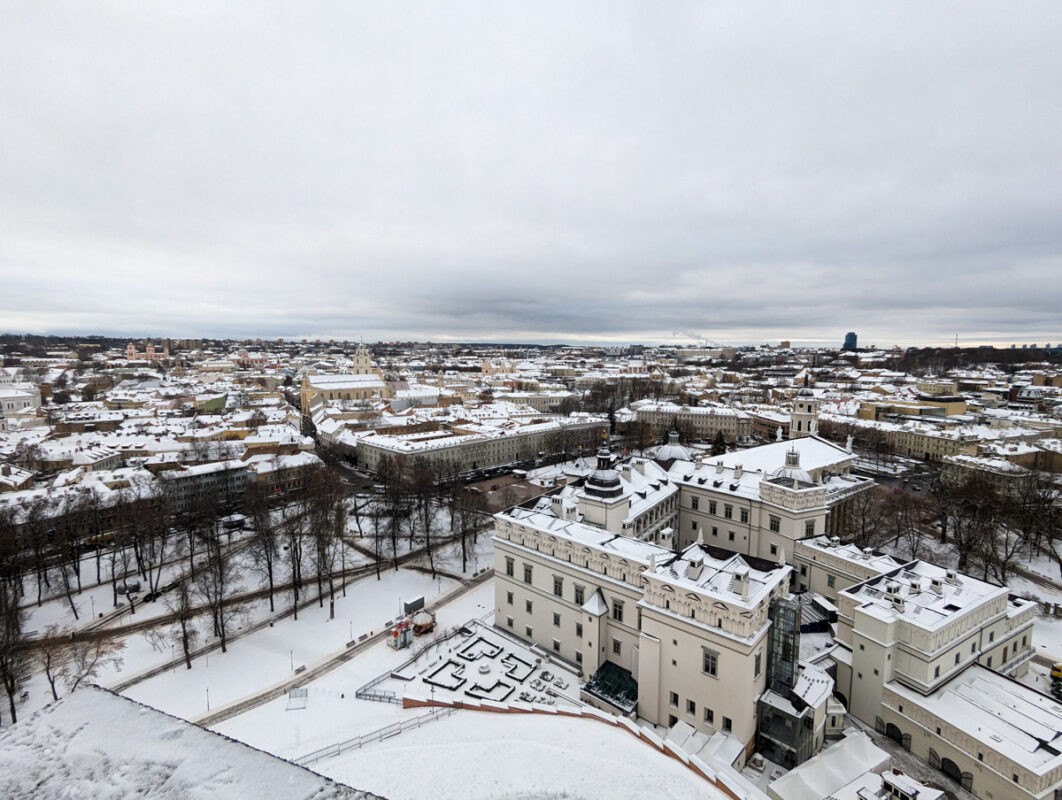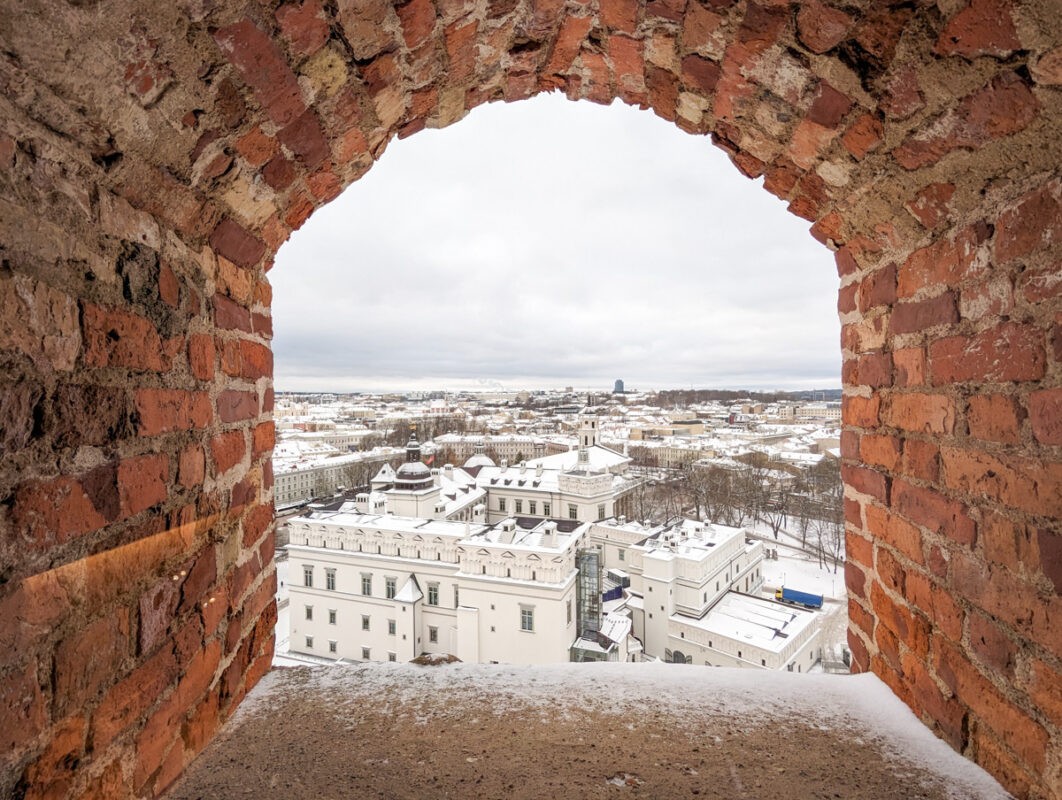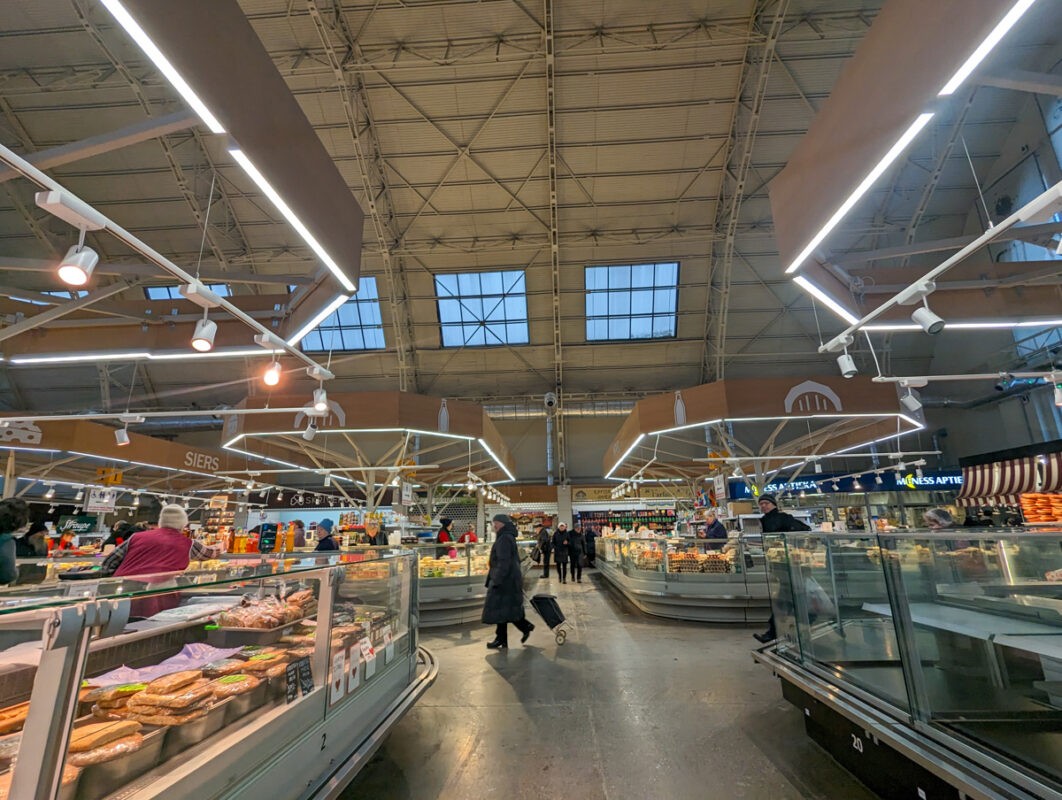If you’re planning a trip to the Baltics, you might be unsure what to expect.
It’s a region of Europe that has modernised hugely in the past few years, but this has led many tourists to not know what to expect.
I certianly didn’t when I visited for the first time in 2023!
But, I put together all of my best Baltic travel advice to help future travellers.
So here are 12 travel tips for visiting the Baltics based on my trip there!
Top Baltics travel tips to help your trip!
If you’re planning a trip to the Baltic countries, follow these travel tips!
1. Plan for winter’s chill

Winter in the Baltic states is beautiful but extremely cold, often reaching below -10°C.
Layering is key, so pack extra thermal clothing, especially for your lower half, like thermal leggings or ski trousers.
Always have a good scarf, gloves, and a hat handy, as temperatures can drop significantly, especially during outdoor activities like walking tours or visiting Christmas markets.
2. Budget realistically for food
While the Baltic capitals are known to be cheaper than many Western European cities, they aren’t as cheap as you might expect, especially when it comes to dining out.
If you’re grabbing quick bites on the go, you can keep costs down, but full meals, especially in restaurants, can be pricier.
Traditional meals in local restaurants may cost around €15-20, especially if you include drinks.
To save on costs, consider mixing restaurant meals with quick snacks from bakeries or food markets.
3. Use Bolt for affordable transport
Bolt, a rideshare app popular in Eastern Europe, is widely available and affordable in the Baltic capitals – it’s actually an Estonian company.
While public transport is cheaper, Bolt is a convenient and fast way to get around, especially if you’re staying further from city centres.
Keep in mind that opting for more central accommodation might allow you to avoid extra rides, as walking can be a pleasant way to explore the compact cities.
4. You can’t rely on trains to get between the countries
Unlike many parts of Europe, the train network between the Baltic countries is not well-developed.
There are no direct train connections between Lithuania, Latvia, and Estonia.
If you’re planning to travel between the capitals, most locals and travellers use the bus. Companies like Flixbus offer comfortable, affordable buses with amenities like Wi-Fi and power outlets. Frequent flights also connect the capitals.
But if you prefer private transport, you could hire a car – but keep in mind that winter driving conditions can be challenging. Private transfers are another possible option – or, at the super-luxe end, there’s always a private plane!
5. Christmas markets are a must-visit

The Christmas markets in Vilnius, Riga, and Tallinn are highlights of winter travel to the Baltics, offering a magical atmosphere.
Each market has its own charm, with Riga’s often touted as the most impressive.
Be sure to try mulled wine (or “glog” in Estonia), local festive treats, and handmade crafts.
However, keep in mind that while the markets are enchanting, food options are typically light, with mostly snacks and sweets – so plan for meals elsewhere.
6. Walking tours are the best introduction
Taking a walking tour when you first arrive in each city is an excellent way to learn about local history and culture.
These tours are often free or tip-based, providing insight into the country’s past, from medieval times through the Soviet era.
Guides frequently offer personal stories and insider knowledge that will help you navigate the city and understand its key landmarks.
7. Museum lovers, be prepared for deep history

The Baltics are rich in history, much of it focused on the impacts of Soviet and German occupations during the 20th century.
Museums like the Museum of Occupations and Freedom Fights in Vilnius and the Museum of the Occupation in Riga provide deeply moving insights into the hardships faced by these nations.
Many museums close on Mondays, so plan your visits around this.
8. Mid-range accommodation offers great value
While luxury hotels are available, mid-range options offer excellent value in the Baltics.
Hotels that include breakfast can save you time and money, especially if you’re planning to spend long days exploring.
If you’re on a tighter budget, hostels are available, with some unique options like capsule hostels in Tallinn.
9. Enjoy local and affordable food markets

Baltic cities offer a variety of affordable food options – with some of the best found at local markets.
Riga Central Market, the largest in Europe, is a fantastic place to find traditional Latvian food, fresh produce, and affordable meals.
These markets are a great way to experience local culture and sample authentic flavours without the high costs of restaurants.
10. Consider visiting multiple Baltic capitals
The proximity of Vilnius, Riga and Tallinn makes it easy to visit all three cities in a short trip.
Vilnius is my favourite, and I also love Tallinn – but Riga’s worth visiting because it’s in the middle, if nothing else!
Each city has its own distinct vibe, history, and attractions, so if you have time, exploring all three will give you a fuller understanding of the Baltic region!
